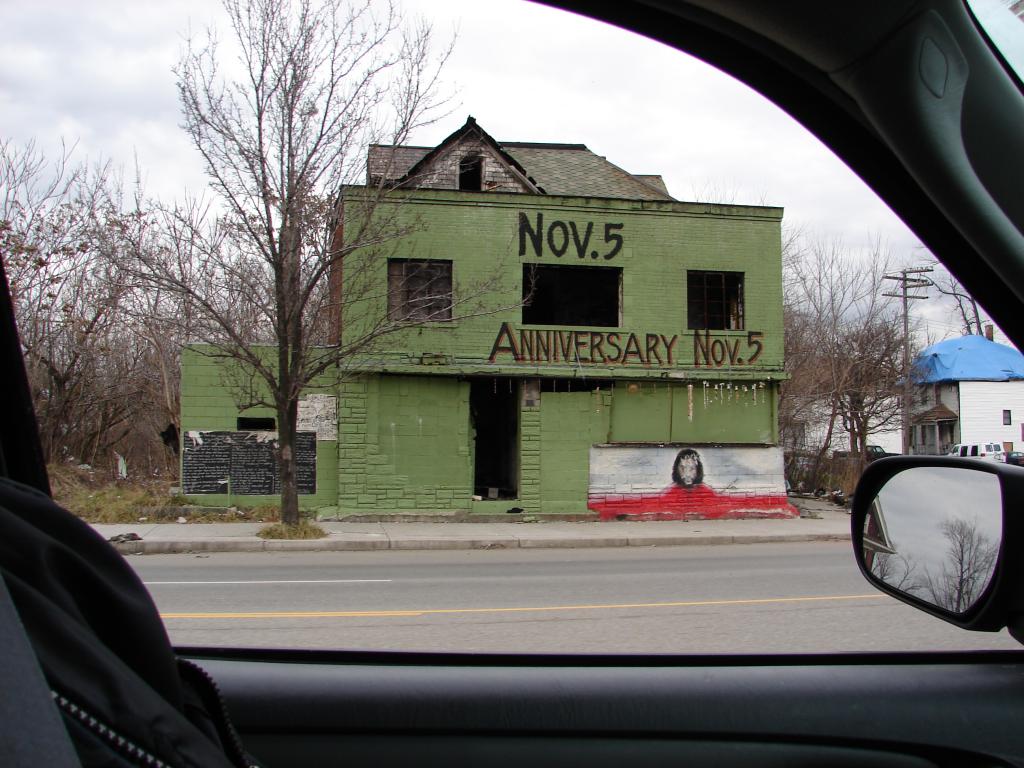![By Jengod at en.wikipedia [CC-BY-SA-3.0 (http://creativecommons.org/licenses/by-sa/3.0/), GFDL (www.gnu.org/copyleft/fdl.html), CC-BY-SA-3.0 (http://creativecommons.org/licenses/by-sa/3.0/) or CC BY 2.5 (http://creativecommons.org/licenses/by/2.5)], from Wikimedia Commons](https://wp-media.patheos.com/blogs/sites/533/2015/03/400px-Detroit-urbanblight-IMG036-200x300.jpg)
The last time I returned from visiting my folks in the Detroit area, I observed (you can read the details here) that Detroit has two sister cities in the population-loss department, as both Cleveland and St. Louis have also lost similar percentages of their population since their peaks in 1950, Cleveland with a loss of 57% and St. Louis matching Detroit exactly with 63%. Yet, it’s only Detroit that has Ruin Porn — at least, I tried finding St. Louis ruin porn by means of google searches and came up empty. At the time, I speculated that St. Louis’s population loss, which was steeper in the decades from 1950 to 1980 (a loss of 47% compared to Detroit’s 35% in that time period, and a certain leveling off since then), wasn’t as visible because the abandoned (or intentionally demolished) housing was replaced by highways, ballparks, and other large urban development projects, and, in addition, the fact that Detroit was historically less dense meant that its abandoned housing units are much more visible.
It occurred to me, in thinking again about Detroit in the context of the proposal I wrote about yesterday, to import 50,000 Syrians (which again, irritates me, to say that the way to fix Detroit is to import a new population), that the low density of Detroit might really be quite significant.
After all, as dramatic as Detroit’s population decline has been, its growth was even more sudden: doubling from 1910 to 1920, from 470,000 to 990,000 and increasing another 50% by 1930, to 1,570,000. And even though everyone gets the story wrong when talking about Ford’s $5/day wage (no, it was not in order to enable his workers to buy his cars; that would bankrupt him — but rather to recruit and retain workers who weren’t too keen on the assembly line model of work), Detroit was, for many decades, a fairly prosperous place to be. Oh, sure, there was poverty, but access to automobiles combined with its comparative prosperity and the comparative lateness of its growth meant that housing was much more in the form of single-family homes than apartments or even two-flats, with nothing at all comparable to the tenements of New York.
So, yes, Detroit has been dependent on the prosperity of the auto industry. Detroit has bought hook, line, and sinker into the “big project” approach to revitalization. And, yes, Detroit has had multiple corrupt mayors, from Coleman Young to Kwame Kilpatrick. But — look, the first of these fails as an explanation when one recognizes that the Detroit metro area, while it may have its ups and downs as well, is doing quite all right. Remember the man who walked 21 miles daily (round trip) to his job? That’s because the jobs are in the suburbs. And Detroit doesn’t have a lock on big projects or corrupt mayors, either.
Hence my completely-unresearched, potentially unsupportable, but what-the-hell theory: was the low density of Detroit, the virtual emblem of its prosperity during its early 20th-century rise, the very factor that brought the city from “financially troubled” to “death spiral”? Certainly low density makes it far more difficult to provide basic city services: road repair, mass transit, streetlights, street patrols by the police, especially when (in contrast to the suburbs) there’s not much middle class to speak of. But beyond that, apartment building with low occupancy rates don’t have the same devastating impact on a city as neighborhoods with vacant homes. And apartment buildings are more readily renovatable, and gentrifiable, than houses, especially when abandoned houses have had everything with any value, even metal to be sold at the salvage yard, stolen from them.
And, yes, I still owe you all some reflections on Heretic. That’s more of a stumper, though, because the fundamental question, that of “what should government policy be, in light of the insights in this book?” is none too easy to work through.












